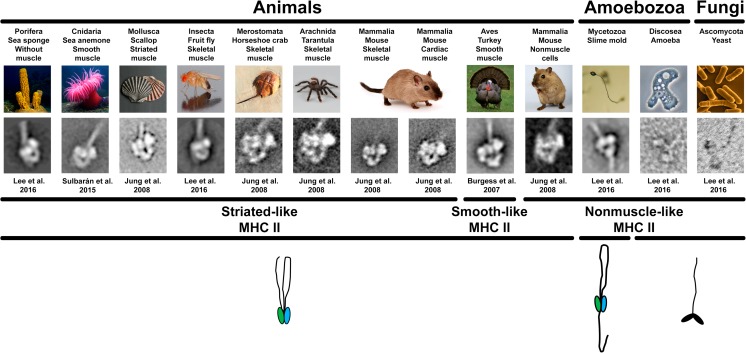Fig. 2.
Averaged images of heavy meromyosins (HMMs) from different species. The IHM is present in the studied metazoans irrespective of the muscle type (smooth, skeletal, and cardiac muscle), nonmuscle cells, or its absence, as in sponges. The IHM presence was not observed in the yeast Schizosaccharomyces pombe (Ascomycota, Fungi) and the Acanthamoeba castellanii (Discosea, Amoebozoa) (images shown are not averaged), while a differently folded tail with extra tail–IHM interactions was observed in Dictyostelium discoideum (Mycetozoa, Amoebozoa). The presence of the IHM in sponges suggests that the IHM is present in the metazoans. The drawings at the bottom show the folded inhibited form of the myosin heads (blocked head green, free head blue) or not (black heads) and the different ways the tail pack on the two folded myosin heads. The span across species of the three MHCII types (striated-like, smooth-like, and nonmuscle-like) is shown. Electron micrographs of turkey HMM reproduced with permission from Burgess et al. (2007) and the Journal of Molecular Biology. Images of organisms from Wikipedia (sponge: Nick Hobgood, Anemone: Attrattorestrano at Italian Wikipedia, Drosophila: André Karwath, S. Pombe: David O. Morgan, A. castellanii: Lorenzo-Morales et al. 2015)

